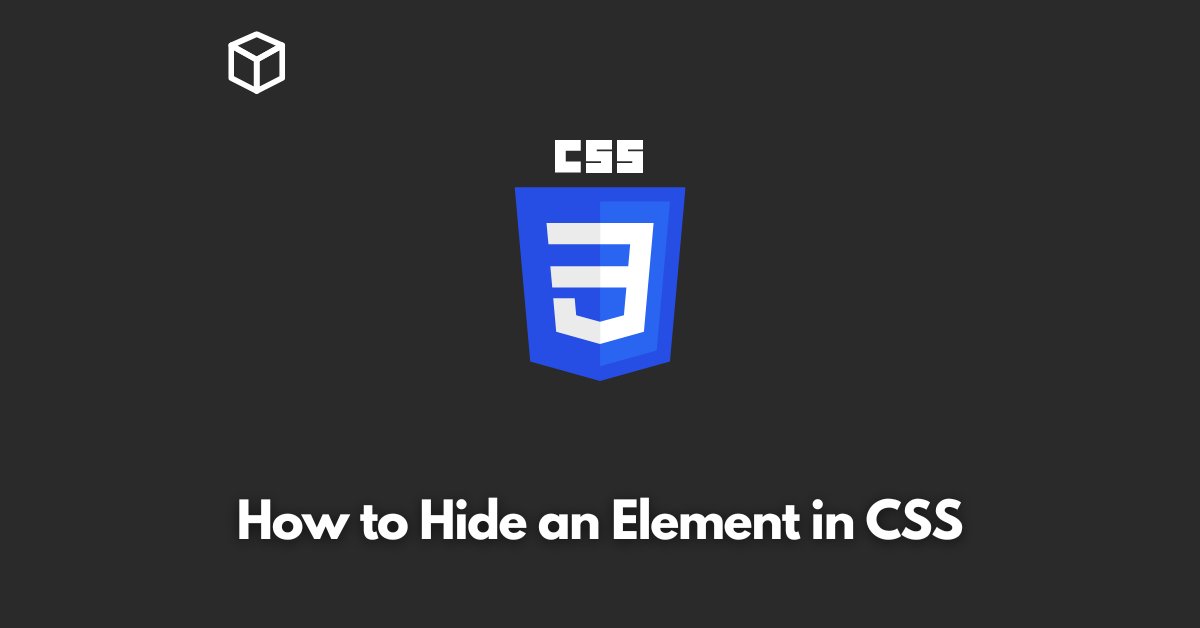As a web developer or designer, it’s essential to have a solid understanding of how to hide elements in CSS.
There are several different ways to do this, and each has its own set of advantages and disadvantages.
In this CSS tutorial, we’ll go over the most popular methods for hiding elements in CSS and discuss when to use each one.
Method 1: The display Property
The first and most straightforward method for hiding elements in CSS is to use the display property.
This property is used to specify how an element should be displayed on the web page.
By setting the display property to “none,” the element will be hidden from view.
This method is easy to implement and is widely supported by all modern browsers.
.hidden-element {
display: none;
}Method 2: The visibility Property
Another popular method for hiding elements in CSS is to use the visibility property.
This property is used to specify whether an element is visible or not.
By setting the visibility property to “hidden,” the element will be hidden from view.
This method is similar to the display property, but it keeps the element in its original position on the web page.
This means that the space that the element occupies on the web page will not be affected.
.hidden-element {
visibility: hidden;
}Method 3: The opacity Property
The opacity property is another method that can be used to hide elements in CSS.
This property is used to specify the level of transparency of an element.
By setting the opacity property to 0, the element will be completely transparent and, therefore, hidden from view.
This method is useful when you want to hide an element but still want to keep it in the same position on the web page.
.hidden-element {
opacity: 0;
}Method 4: The clip Property
The clip property is a lesser-known method that can be used to hide elements in CSS.
This property is used to specify a rectangular area of an element that should be visible.
By setting the clip property to “rect(0,0,0,0),” the element will be hidden from view.
.hidden-element {
clip: rect(0,0,0,0);
}Which Method to Use?
When it comes to hiding elements in CSS, it’s essential to choose the right method for the job.
Each method has its own set of advantages and disadvantages, and the best one for your project will depend on your specific needs.
If you want to hide an element and keep its space on the web page, then the display property is the best option.
If you want to hide an element but keep it in its original position, then the visibility property is the best option.
If you want to hide an element but keep its position and still want to keep it transparent, then the opacity property is the best option.
And If you want to hide an element but keep its position and still want to keep it visible in some area, then the clip property is the best option.
In conclusion, hiding elements in CSS is a crucial aspect of web development and design.
By understanding the different methods for hiding elements, you’ll be able to choose the best one for your project and create a polished, professional-looking web page.




